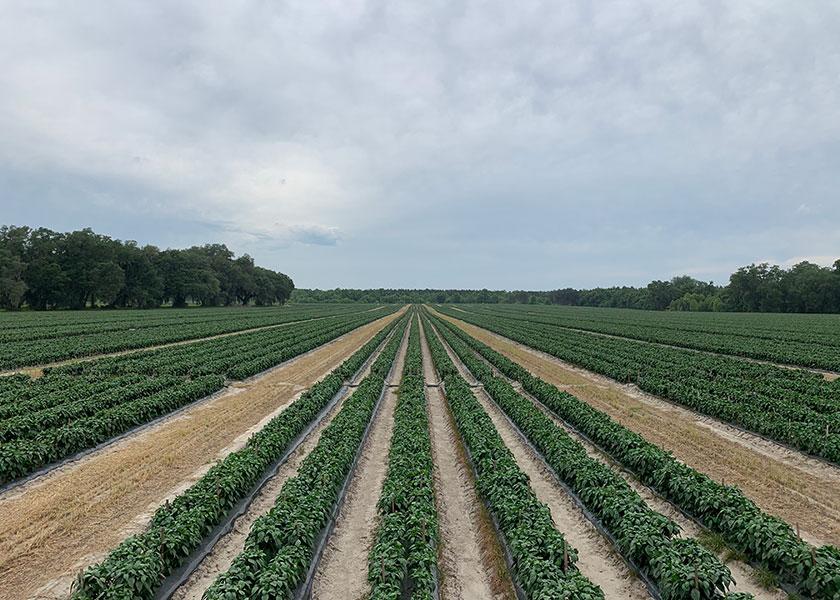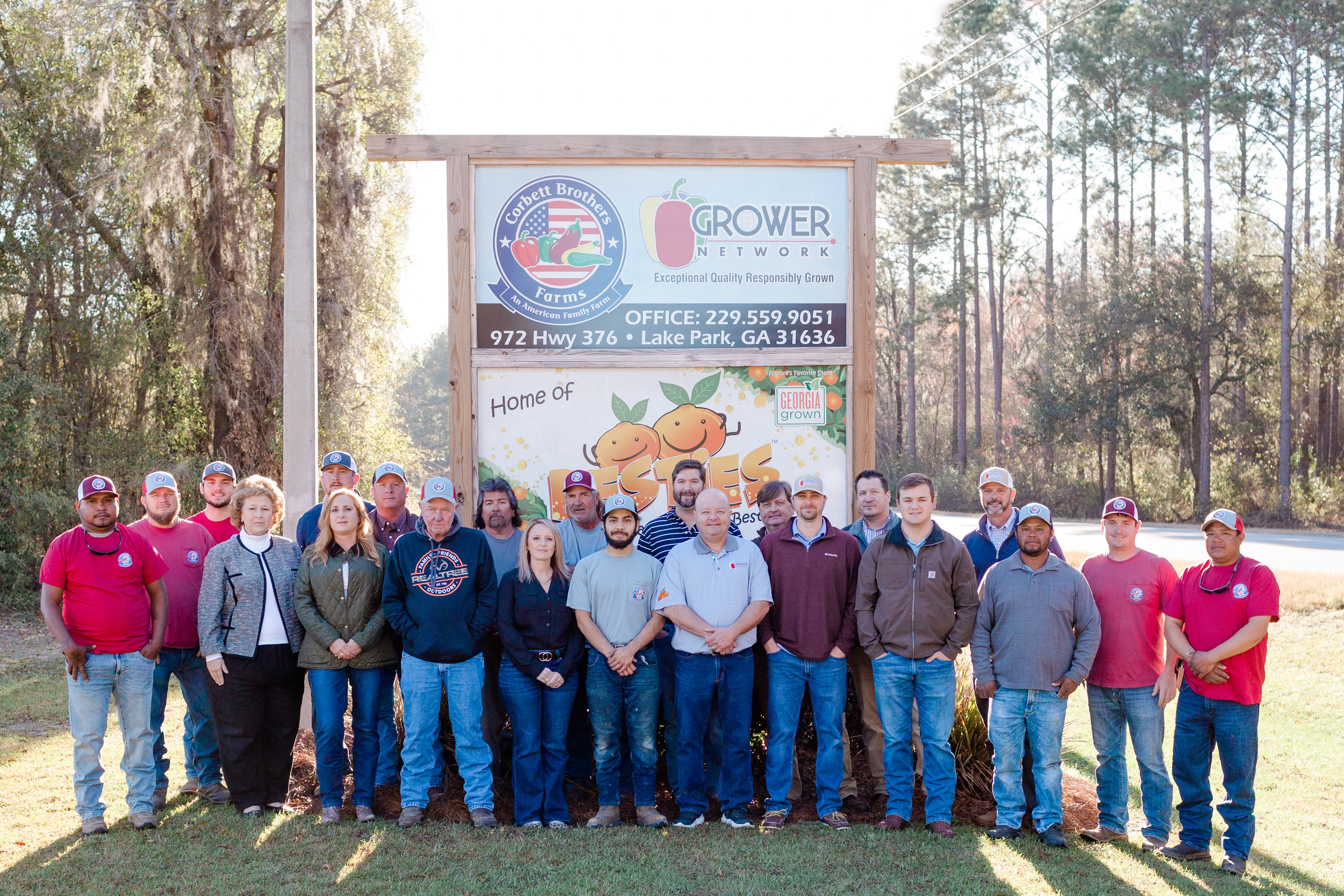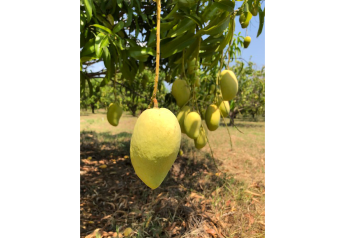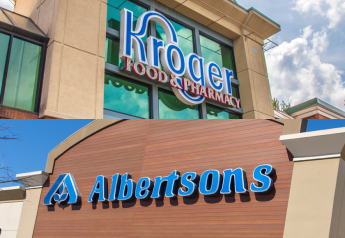No problem with bell pepper demand coast to coast

Mild, sweet, large and crunchy, bell peppers are music to growers’ ears. From the East Coast to West Coast and north to Canada, bell pepper production has had a few hiccups but nothing significant — and the demand for them is causing no complaints this season.
Grower Network’s farms have dealt with a couple of cool snaps that have delayed picking green bell peppers by about a week, but it looked likely to start by mid-May and continue for six to eight weeks. Another round of planting will come in the fall.

“The crop is beautiful. Everything is on schedule as far as that goes,” said Yancey Houston, sales manager for Grower Network, the exclusive marketer of peppers from Lake Park, Ga.-based Corbett Bros. Farms, both owned by Justin and Jared Corbett. The farms focus on green bells, but also grow red and yellow bells, as well as specialty peppers such as cubanelle, Hungarian, jalapeño, long hot, poblano and serrano. The company also grows other vegetables and citrus such as the Besties branded satsumas. Sales have been great for green bell peppers while consumers have been cooking at home more, and even though Houston said he expects people to be out and about more this year, they’ve developed some healthier habits likely to stay. “We’re in it to win it,” Houston said.

Prices are higher all around for peppers, especially for organics in some cases, according to the U.S. Department of Agriculture’s Vegetable and Pulses Outlook, released April 16. U.S. vegetable advertised retail prices per pound between the first quarter of 2020 and first quarter of 2021:
- Conventional green bell pepper retail prices rose from $1.46 to $1.48 — a 1.6% price increase.
- Organic green bell peppers prices went from $1.73 to $2.01 — a 16.4% price increase.
- Conventional non-green bell peppers went from $2.69 to $2.64 — a 1.9% price decrease.
- Organic non-green bell peppers went from $3.72 to $3.78 — a 1.5% increase.
- Conventional mixed mini sweet peppers went from $2.84 to $3.17 — an 11.7% increase.
- Organic mixed mini sweet peppers went from $3.43 to $4.16 — a 21.4% increase.
Any better price is sorely needed as grower-packer-shippers are dealing with much higher freight rates.
Related: Florida ag commissioner comments on strawberry, bell pepper imports
“We stay on the Eastern Seaboard, but even for us, the cost of a truck is a major deal for us that we’ve never seen,” Houston said. “From here to Canada or New York, or even as simple as from Miami to where we are, we see that rate three to four times higher than normal.”
At Peter Rabbit Farms, Coachella, Calif., green bell peppers started picking before the last week of April, and they’re a good size, extra-large and jumbo, said Garret Powell, sales and operations.However, Coachella Valley had some strong winds in late April and early May that dropped production slightly compared to last year and the year before.
Demand is good, though, especially as the Midwest and East Coast had some unfavorable weather that had customers looking to the West Coast Peter Rabbit Farms. Red bell peppers will start by mid-May, and they’re looking solid, Powell said. “Our red fields weren’t maturing when we had high winds, so they’re looking gorgeous right now,” he said. “We’re just riding the wave now.” Red bell prices have been “wonky,” Powell said. At one point a few weeks ago, they were going for $3 a box from Mexico and at other times, $24 to $30 a box from Mexico. Powell suspects that because the market for green bells was so good awhile back, Mexican growers were picking the reds before they matured and were still green. So, when it came time for red bells, there wasn’t much available. “Regardless, we’re hoping to enter at a good time when the supply is low,” he said. Like Southeast pepper growers, Peter Rabbit Farms repeats its spring bell pepper program in the fall.
Related: Greenhouse fruits, vegetables continue to expand
Peppers are some of many fresh-market vegetables with double-digit percent change declines in utilized production, according to the USDA. Between 2019 and 2020, U.S. utilized production of chili peppers dropped 18%, from 291.9 million pounds to 238 million pounds. Utilized production of bell peppers fell by 11%, from 920.7 million pounds to 821.9 million pounds. Some producers diverted fresh market bell peppers to the processing market due to pandemic related stoppages in the supply chain, as well as hot weather and wildfires in California, according to the National Agricultural Statistics Service. Bell pepper imports rose 3% from 2019 to 2020 and chili peppers rose 1%, according to the USDA. In the same time, pepper exports dropped 5%.

The Oppenheimer Group, Vancouver, British Columbia, grows peppers in Canada and Mexico. The season started in late March at Perpetual Vegetable Co. and Origin Organic Farms in British Columbia, with an excellent, healthy crop so far, said Aaron Quon, executive director of greenhouse and Canadian category development. “For the most part, weather has been good with no major issues.,” he said. Oppy also brings fresh peppers to the market year-round with the Divemex label, which is transitioning from one season to the next.

Specialty pepper volume has grown with mini peppers increasing by 400% this year, and long pointed peppers, called Big Sweeties, are growing in volume too after a 15-acre expansion at Perpetual Vegetable Co. Consumer demand is good, but not as prolific as it was the first and second quarter of 2020 when COVID-19 was new, and Oppy’s growers, packers, shippers and marketers worked overtime to keep fresh fruits and vegetables on the shelves. “But, since then, more people have discovered how versatile peppers are through their experience cooking at home more frequently and we expect the popularity of peppers to continue,” Quon said.
Canadian growers are feeling the same freight and labor frustrations as those in the U.S. “Echoing our peers in the industry, increased cost of overall production due to labor rates and freight costs has affected this season,” Quon said.
Related Packer Insight — Economics of greenhouse, Texas citrus, Chilean grapes







